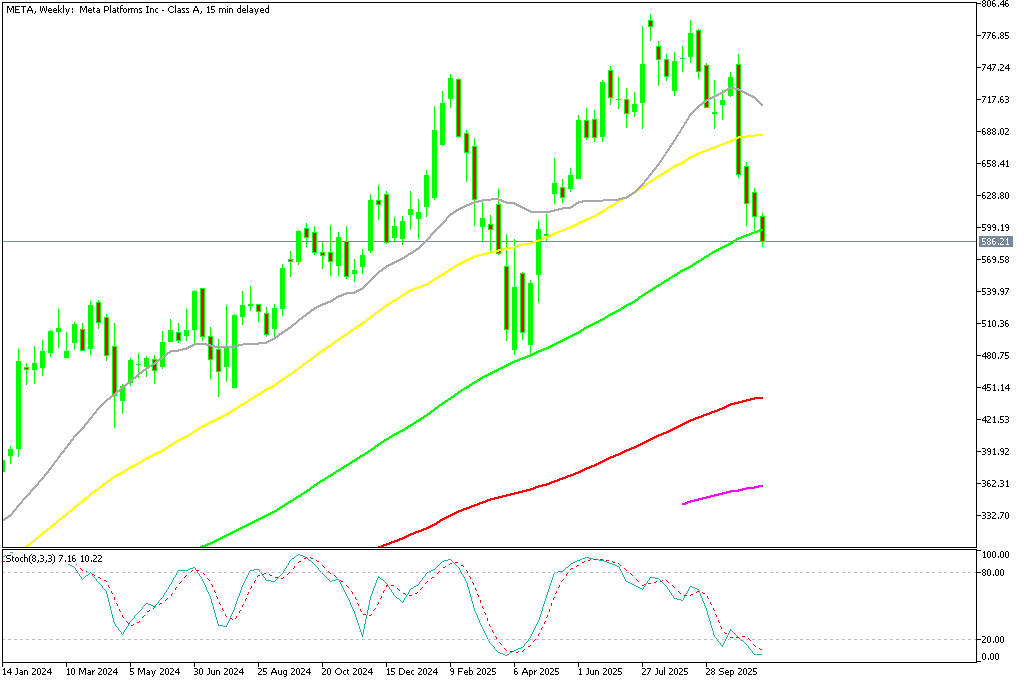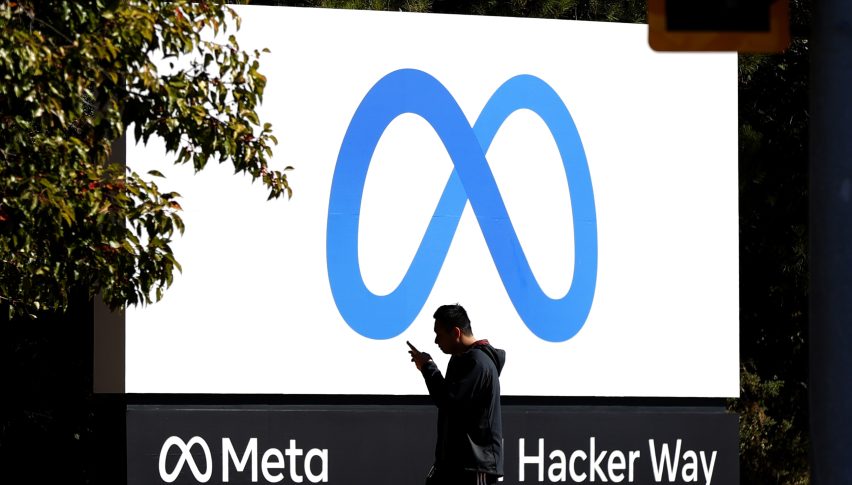Meta Stock Breaks Its Support as AI Bet Backfires But Returns to $600 – Where Next?
As rising hardware and AI expenditures surpass revenues and rekindle long-standing worries about the company's sustainability, Meta's stock

Quick overview
- Meta's stock has dropped nearly 20% in the past 21 days due to rising concerns over its profitability amid heavy AI and hardware investments.
- Despite a Q3 revenue beat, the company's earnings per share fell significantly due to a large non-cash tax charge and escalating expenses.
- Meta's commitment to AI infrastructure is leading to a projected capital expenditure of $70–$72 billion by 2025, raising questions about future profitability.
- Strong user engagement metrics are overshadowed by the company's ballooning costs, prompting skepticism about the sustainability of its AI investments.
Live META Chart
[[META-graph]]As rising hardware and AI expenditures surpass revenues and rekindle long-standing worries about the company’s sustainability, Meta’s stock is crashing.
Meta’s Cost Explosion Rekindles Doubts About Its AI Future
A major piece of the downside risk embedded within Silicon Valley’s AI dreams became painfully clear in Meta Platforms’ latest results. What should have been a celebratory Q3 revenue beat instead exposed the financial weight of Meta’s sprawling ambitions, pushing the stock into one of its deepest declines in recent years. Over the past 21 days, Meta shares have dropped nearly 20%, reflecting a sharp reassessment of the company’s long-term cash-flow outlook.
This downturn has been fueled not only by the disappointing earnings details but also by rising skepticism across the market about the sustainability of the AI investment frenzy. Meta’s aggressive push — spanning data centers, compute build-outs, and Reality Labs ventures — is being scrutinized more intensely than ever.
Market Confidence Buckles as the Chart Breaks Down
After months of consistent gains, the stock’s upward momentum has fractured. A string of losing weeks in November erased the complacency that had accompanied the stock’s advance throughout 2025. The 2% drop on Wednesday was only the latest chapter in a broader retreat that has stripped away more than a quarter of Meta’s market value since its October 10 peak at $796
The technical picture underscores the severity of the reversal. Meta has fallen below the 50-day moving average (yellow) and, more importantly, slipped under the $600 threshold — a level many traders viewed as a psychological anchor.
Meta St0ock Chart Weekly – The Last Technical Support Has Been Broken
This week’s fall beneath the 100-week moving average (green) adds further downward pressure, with chart watchers eyeing the April lows below $500 as the next major target. A decline of this speed and scale raises an uncomfortable question for investors: is this a temporary dislocation, or the early stages of a structural reset?
Earnings Beat, But Profits Collapse Under the Weight of Spending
Meta’s Q3 headline numbers superficially looked strong, with revenues up 26% year-over-year on resilient advertising demand. But the underlying profit story was far more alarming. Earnings per share cratered to $1.05, largely due to an almost $16 billion non-cash tax charge tied to updated U.S. regulations. While management emphasized the one-off nature of the adjustment, analysts focused instead on Meta’s intensifying cost trajectory.
Total expenses surged 32% to $30.7 billion, far outpacing revenue growth. Although operating income climbed to $20.5 billion, the margin compression revealed the growing imbalance. Investors interpreted this margin squeeze not as a blip but as a warning about what Meta’s future financial profile may look like in an era of unrestrained AI spending.
AI Infrastructure: A Vision With a Mounting Price Tag
Management reaffirmed its commitment to the AI arms race, raising its 2025 capex outlook to $70–$72 billion — an enormous sum that reflects expanding data center footprints and escalating compute needs. Full-year expenses were also boosted significantly, landing between $116 and $118 billion.
This is only the beginning. Meta executives signaled that 2026 will require yet another year of heavy investment, hinting that profitability could remain under pressure for the foreseeable future. When combined with long-term AI infrastructure commitments approaching $600 billion across the next decade, the financial burden becomes even more staggering.
Strong User Metrics Offer Support, But Not Enough
On the operational front, Meta’s engagement engine remains powerful: daily active users climbed 8% to 3.54 billion, total ad impressions increased 14%, and average ad pricing rose 10%. Under normal circumstances, these metrics would have propelled the stock higher. But the relentless increase in infrastructure and Reality Labs costs has overshadowed the underlying business strength.
In a market increasingly sensitive to the risk of an AI bubble, Meta’s ballooning spending is now viewed not as visionary, but as a liability. The company’s challenge over the next year will be convincing investors that its massive investments can eventually translate into sustainable profitability — a debate that is far from settled.
- Check out our free forex signals
- Follow the top economic events on FX Leaders economic calendar
- Trade better, discover more Forex Trading Strategies
- Open a FREE Trading Account



